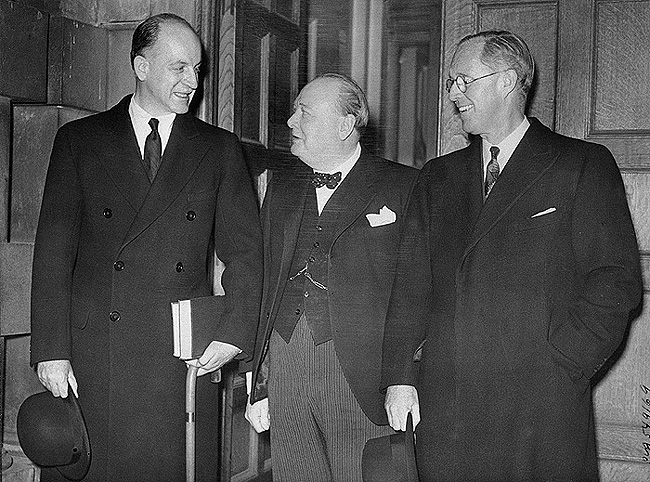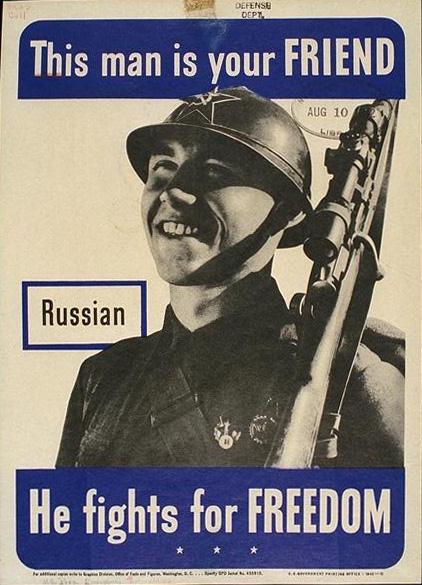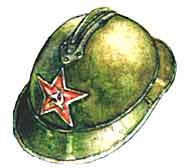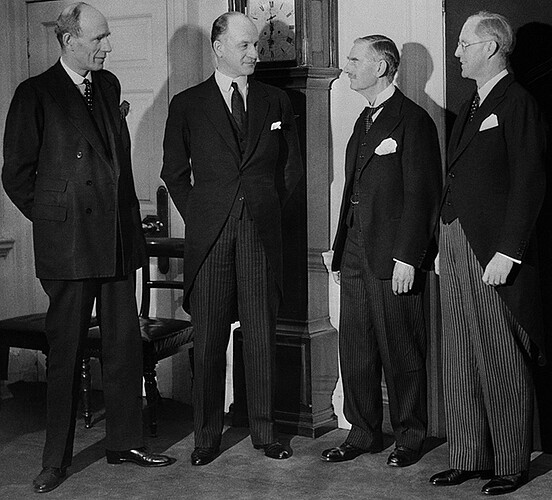in case it is too difficult, here is another photo where the person in question appears second from the left.
Same year, 1940.
Seen that one before
Lord Halifax, Welles, Neville Chamberlain, Joseph P. Kennedy
So what did the Welles discuss with Goering in 1940?
And who is on the picture - Queen of Britain?
Yes, this is Mr.Sumner Welles - a remarcable fellow, who among other things was Under Secretary of State in US (the #2 position) from 1937 to 1943, during the Franklin D. Roosevelt administration.
Here the Wikipedia article on him: http://en.wikipedia.org/wiki/Sumner_Welles
And this is an outstanding site with a whole book about him: http://www.gutenberg-e.org/osc01/index.html
This site is particulary interesting because it contains a lot of documents. My favorit part is the collection of the maps with the materials from the The American Postwar Planning comeety led by Mr.Welles. I already presented couple of maps on our forum in the thread about Poland.
In February 1940 Mr.Welles went to Europe with a mission to investigate situation and attempt to negotiate peace. He arrived to Rome 22nd February 1940 and was very impressed with Italian leaders (Italy was still kind of nutral). Then he went to Berlin. Then Paris and London.
Here is a short quote that might light the purpose of this endavour.
Taken from the work by Christian D.O.Suillivan “Sumner Welles, Postwar Planning, and the Quest for a New World Order, 1937-1943”,
chapter 3 “Creating War and Peace Aims: The Welles Mission, the Atlantic Charter, and the Origins of Postwar Planning, 1939-1941”
[INDENT]
Welles and Roosevelt thus aimed to exploit the opportunity presented by the "phony war" to explore the possibilities of a settlement. It is not improbable that, even at this late date, Welles sought a revision of the Versailles settlement that would have appeased several German aims, while at the same time seeking to soothe allied opinion through arms control and the reconstitution of some form of a "rump" Czechoslovakia and Poland. He certainly went to Europe seeking to explore the prospects of what might be the basis of a potential settlement (particularly from the Axis powers, whose aims and positions were less clear to Washington), and he would have been elated had he been able to achieve a Wilsonian "peace without victory" in Europe. Failing that, Welles had other, more immediate, goals: namely, to explore the strength of the Rome-Berlin axis and consider what measures might be taken to weaken Mussolini's commitment to Hitler.
At the very least, the mission might cleverly aid the allied powers by delaying a German offensive in the west. Welles and Roosevelt worried that Hitler was preparing a massive spring offensive against the western allies. They hoped the mission might cause a delay in the Führer's war plans, or even avert a German offensive altogether. They assumed that even a brief delay would benefit the Allies by allowing them more time to supply their armies and build up their defenses.
Furthermore, Welles feared that the stakes now included more than a mere reshuffling of European boundaries and colonial spoils, and that continuation of the war would increase the potential peril to U.S. interests. Worse still, Berlin's domination of Europe could lead to German economic penetration of the Western Hemisphere, thereby undermining efforts to safeguard the Pax Americana. Roosevelt and Welles may have also had fears that Prime Minister Chamberlain might seek an Anglo-German agreement that would, in effect, exclude the United States from trade and commercial opportunities in Europe, Africa, and Latin America.
[/INDENT]
Mr.Welles was fired in 1943 due to some scandal involving homosexual episode. Here is a page with magasin from 1956 with an expose article on him: http://www.reformation.org/welles-confidential-magazine.html
Not sure about Welles but Joe Kennedy was played instrumental role in the Munich agreement. Maybe this is part of the meeting in the 4 man picture.
Gen Sandworm, it is not 1938, but 1940 ( http://www.gutenberg-e.org/osc01/images/osc03c.html ).
Have you read my previous post?
Yea im an idiot…just woke up!  Cant believe I quoted it and then made the comment. Year right there. lol
Cant believe I quoted it and then made the comment. Year right there. lol
Maybe back to bed.
Year Gen it was 1940.
So it seems the Welles was a gey 
Egorka what did the Welles with Goering … making a love?
Well what they were talking about is hard to say. Depends if it was before the invasion of the France or not. Most likely a state visit pursuing peace.
One more photo of Welles.
The description for the photo states:“Welles, Churchill, and Joseph P. Kennedy in London. Welles, unimpressed with Churchill, subsequently cabled Roosevelt that he believed the British statesman had already consumed a large amount of scotch prior to their meeting” 
And also this: “He found that Churchill had nothing new or original to say about the war, and he confided to the president that he believed Churchill was incoherent and intoxicated throughout much of their two hours together.”
And this: "Some in Washington speculated that Lloyd George might replace Chamberlain, but Welles grew increasingly alarmed that Chamberlain’s departure might mean a new government led by Winston Churchill, and Roosevelt remarked that he “supposed Churchill was the best man England had, even if he was drunk half of the time.”

Gen. Sandworm,
Welles during his trip arrived to Italy 22-February-1940. He went to Rome, Berlin, Paris, London, Rome, then home.
The visit lasted 41 days.
The whole I idea of this was to “exploit the opportunity presented by the “phony war” to explore the possibilities of a settlement.”
When Germany seized Denmark 9th of April all the hopes related to Welleses mission were gone.
Here is a link to an article (NOT a free one): http://links.jstor.org/sici?sici=0021-8723(197106)58%3A1<93%3ATWMTEF>2.0.CO%3B2-T&size=LARGE
And here is a book I have not read  : http://www.amazon.fr/Franklin-Roosevelts-Foreign-Policy-Mission/dp/140398073X
: http://www.amazon.fr/Franklin-Roosevelts-Foreign-Policy-Mission/dp/140398073X
Here is a TIME magasin article on the trip: http://www.time.com/time/magazine/article/0,9171,763771,00.html
Ok, one more. Who is this?

HE He He 
This remind me the recent time of Boris Yeltcin in power in 1993-99. Then one of american magazine called him as best russian democrat , even if he was drunk half of the time 
This American is propogandic poster. Who is this man with the gian comic star on british helmet i don’t know, i/m doubt this man who must to imagine the Red ARmy soldier is russian indeed.
Here is the rest company of friends



Chevan,
The helmet on the Soveit poster is not British. It is The Adrian’s steel helmet with the tin red star. French design from WWI.
Look here under number 36: http://rkkaww2.armchairgeneral.com/uniform/2/Uniform_2_2.jpg
Also look at this Wiki article in russian in the CCCP section: http://ru.wikipedia.org/wiki/Каска


Первоначально просто извлекли из складов старые периода Первой Мировой войны (каски Адриана и обр. 1916г.). Однако эти каски больше использовались на первомайских парадах в Москве. Реально в войсках их практически не было.
kaska-5.jpg (4428 bytes)На рисунке французская каска Адриана, носимая красноармейцами на парадах в Москве в 1932-34 годах.
Трудно сказать чем не понравилась эта каска руководству Красной Армии, ведь французская армия и во Вторую Мировую войну вступила в таких же, а английская так и провоевала до 45 года в своей каске обр.1915г. Однако в середине 34 года выдается задание на разработку шлема стального “более соответствующего условиям современного общевойскового боя”.
OK mate, The helmet is the Frence.
But where did you see the Red Army soldier in the WW2 with this helmet?
No. It is Russian made but of the French construction.
It was used only by elit regiment during parades (see the quote I posted before). The new design was accepted in 1940.

